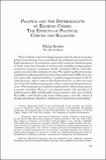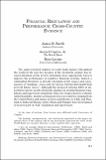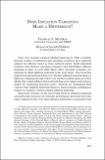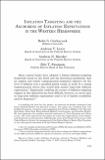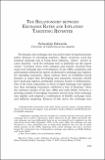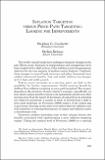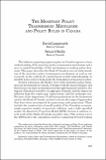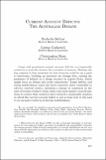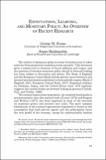Buscar
Mostrando ítems 21-30 de 1741
Politics and the determinants of banking crises: the effects of political checks and balances
There is likely to be little disagreement with the observation that political interference has exacerbated the problems associated with bank insolvencies. Nevertheless, most ot the analytical attention given to bank crises has focused on technocratic mistakes (inappropriate regulatory choices), exogenous ...
Financial regulation and performance: cross-country evidence
The unprecedented number of costly bank failures throughout the world in the last two decades of the twentieth century has focused attention on the need to determine more appropriate ways to improve the performance of countries financial systems. Indeed, a substantial literature is already emerging ...
Does inflation targeting make a difference?
Since New Zealand adopted inflation targeting in 1990, a steadily growing number of industrial and emerging economies have explicitly adopted an inflation target as their nominal anchor. Eight industrial countries and thirteen emerging economies had full-fledged inflation targeting in place in early ...
Inflation targeting and the anchoring of inflation expectations in the Western hemisphere
Many central banks have adopted a formal inflation-targeting framework based on the belief and the theoretical predictions that an explicit and clearly communicated numerical objective for the level of inflation over a specified period would, in itself, be a strong communication device that would help ...
The relationship between exchange rates and inflation targeting revisited
For decades, the exchange rate was at the center of macroeconomic policy debates in emerging markets. Many countries used the nominal exchange rate to bring down inflation, –others—mostly in Latin America—used the exchange rate to implicitly tax the export sector. Currency crises were common and usually ...
Inflation targeting versus price-path targeting: looking for improvements
The world’s central banks have undergone dramatic changes in the past fifteen years. Increases in independence and transparency have been coupled with a shift in focus. Price stability is now the paramount objective for the vast majority of modern central bankers. Combined, these changes in central ...
The monetary policy transmission mechanism and policy rules in Canada
The inflation targeting regime in place in Canada requires a clear understanding of the monetary policy transmission mechanism and a way to exploit knowledge of that mechanism in making policy decisions. This paper describes the Bank of Canada's current undestanding of the monetary policy transmission ...
The monetary transmission mechanism in the United Kingdom: pass-through and policy rules
A number of recent papers have used policy simulations from small empirical macroeconomic models to assess the efficacy of inflation targeting or, more precisely, inflation forecast targeting (Svensson, 1997a). These include Rudebush and Svensson (1999). The models used to undertake these simulations ...
Current account deficits: the Australian debate
Large and persistent current account deficits are frequently raised as a cause for concern for a number of reasons. Perhaps the key concern is that countries in this situation could be on a path to insolvency, building up excessive net foreign debt, raising the prospects of default or a sharp reversal ...
Expectations, learning and monetary policy: an overview of recent research
The conduct of monetary policy in terms of interest rate or other rules has been extensively studied in recent research. This literature gives a central role to forecasts of future inflation and output, and the question of whether monetary policy should be forward- ooking has been subject to discussion ...

